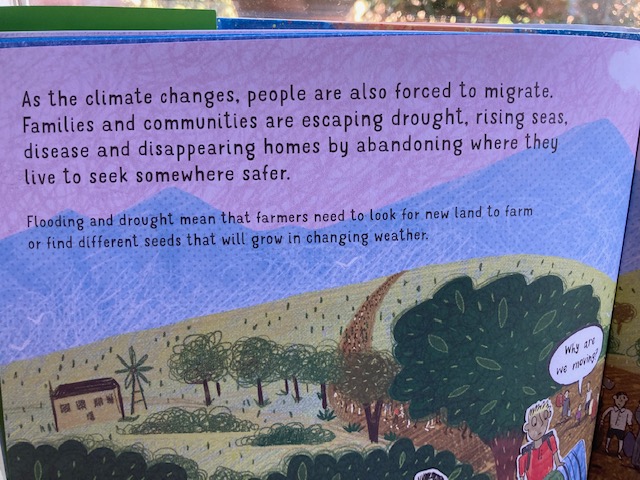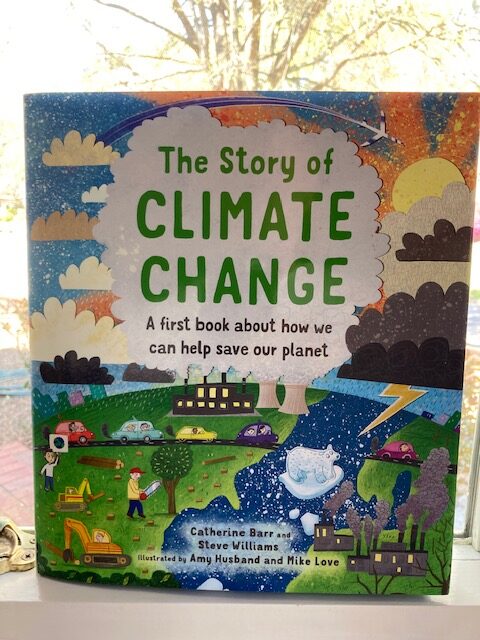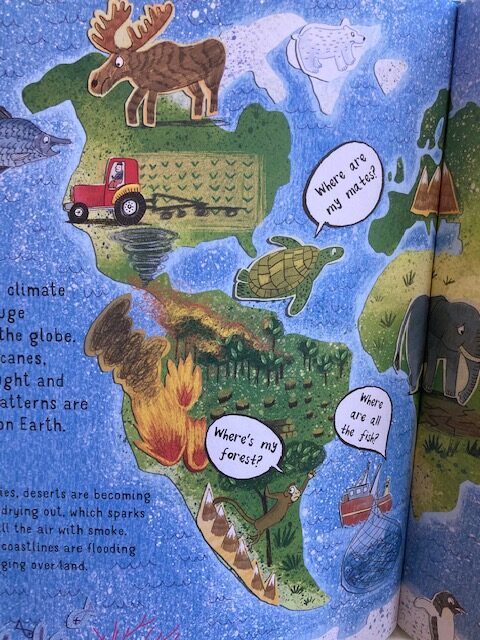The Story of Climate Change, A First Book About How We Can Help Save the Planet is the fifth book in the series by Catherine Barr and Steve Williams. It’s an engaging book that introduces second through fourth graders to the history of climate change. The illustrations by Amy Husband and Mike Love are playful, have lots of movement, and certainly keep the eyes of those young readers busy in the best of all possible ways. Most of the target audience will enjoy the book and its approach to global warming is unique in its visual presentation.
The Story of Climate Change is very well-intentioned. Children need to learn about climate change and taking care of the environment. To an extent, this book does a great job at it. The problems that some educators or parents will have in the book are the large-scale issues it lists without secondary causes or, even worse, questionable resources that it lists as undisputed facts. They are relatively minor issues in the scope of the book, but for some readers, they’ll leave a taste in their literary mouth.
It teaches children the history of climate change by taking a look back at the planet through various ages. We see the insects that lived billions of years ago, the dinosaurs that roamed millions of years ago, the factories that started two hundred years ago, and the decades that led up to modern times. The illustrations complementing the text play out like a diorama from ancient to modern times. Younger readers will envision the characters in the book pop-up as if they were 3-D. The illustrations sometimes have a very faint white outline around them, as if they were cut out to match the movements which help add to that effect.
The Keeling Graph is sometimes mentioned at the same time as the hockey-stick-curve. While the Keeling Graph is more studious, its hockey-playing doppelganger has often been the subject of data that’s been cherry-picked. The plight of migrants is also listed, but the main cause of their movement is alluded to be drought, rising seas, disease and the vague statement of living someplace ‘safer’. While that reason does factor into their movement, the also likely conditions of their ineffective government aren’t listed as a reason. I know, I’m reading too much into this children’s illustrated book. Perhaps I’m in a bad mood, or maybe this book is just a bit too heavy, albeit with a gentle touch, towards activism and away from education.
There is also a two-page spread on farming in third-world countries and how women are the future. For a moment I could envision that kid from Cobra Kai wearing a t-shirt that says “The Future is Female”, but without any hint of irony or comedy.
Those three points are small and won’t register with the main audience for the book. For most children, The Story of Climate Change will serve as a nice primer on this issue that they will learn about in elementary school. Young readers aged five through eight will like the art and its bite-sized sentences with age-appropriate text. There’s a glossary in the back, but the book would’ve furthered its enjoyment and education if it listed additional resources for those ages to learn more. Climate change is real and kids need to learn about it, but parents might want a book that’s free of opinion and deals 100% with facts, or both sides of disputed opinions.
The Story of Climate Change, A first book about how we can help save our planet is by Catherine Barr and Steve Williams, with illustrations by Amy Husband and Mike Love and available on Frances Lincoln Children’s Books, an imprint of Quarto Knows.
There are affiliate links in this post.







 Facebook
Facebook Twitter
Twitter Flickr
Flickr GooglePlus
GooglePlus Youtube
Youtube